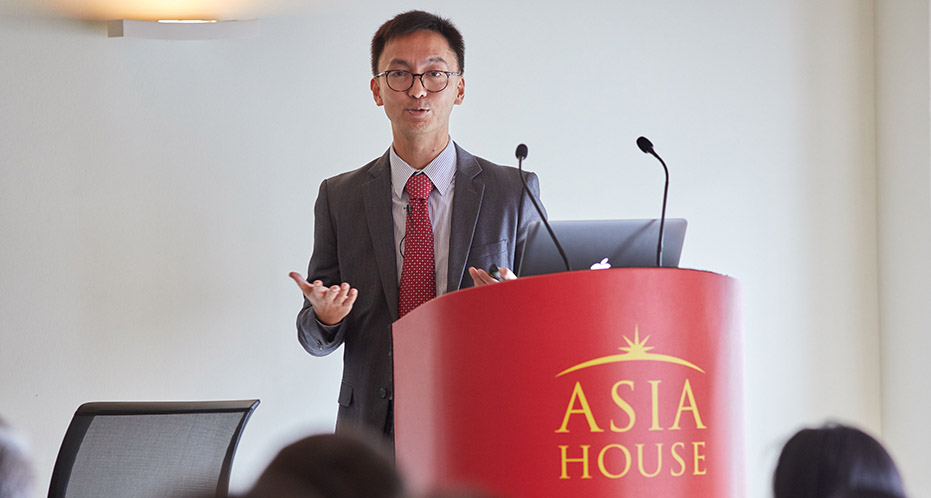Driving commercial and political engagement between Asia, the Middle East and Europe
Driving commercial and political engagement between Asia, the Middle East and Europe
Driving commercial and political engagement between Asia, the Middle East and Europe

Emerging Asia’s two largest economies, China and India, are on “divergent growth paths,” amid a broader slowdown across the region, according to the Asian Development Bank’s Director of Macroeconomic Research, Abdul Abiad.
Speaking at Asia House for the launch of the Asian Development Bank’s new report, Asian Development Outlook 2019 (ADO), Abiad said China’s growth “is expected to slow, while India’s growth is expected to pick up.”
A slowdown across developing Asia is also likely to continue into 2020, Abiad said, “primarily due to weaker global demand but also prolongued trade tensions.”
Regional growth rate is expected to be 5.7 per cent this year and 5.6 per cent in 2020.
China and India
Although China’s growth, at six per cent, is “still a growth rate that many countries would love to have,” it does represent a deceleration – but one which is to be expected as China’s economy develops, Abiad suggested.
“Many of the factors behind the slowdown are structural. You have the concept of convergence – the richer you get the slower you tend to grow.”
As China’s economy shifts from investment towards consumption and industry towards services, “growth would naturally slow,” he said.
However, non-structural factors have also played a role; policy tightening to head off financial risks such as shadow banking, for example, is having an impact.
Policy factors are also behind the ADO’s forecasts for India, which is expected see a modest increase, with 7.2 per cent growth in 2019 and 7.3 per cent in 2020. This is due to “supportive policies” including rate cuts and rural income support, Abiad said.
“Consumer and business sentiment remain strong” in India, he added.
External pressures driving regional slowdown
Outlining the factors behind emerging Asia’s expected growth slowdown, Abiad pointed to outside pressures in the form of global trade tensions and sluggish performances across advanced economies.
“The US, Eurozone and Japan are slowing, and this will obviously weigh on Asia,” he said, while US-China trade tensions “remain a concern.”
“The US and the People’s Republic of China together account for 40 per cent of the global economy and a quarter of world trade,” Abiad said, highlighting how any escalation could impact on global value chains.
However, based on analysis of three scenarios – the impact of all implemented measures as of March 2019; a bilateral escalation scenario where 25 per cent tariffs are imposed on all US-China trade; and a ‘worst-case scenario’ where a further 25 per cent tariff is added on all traded autos and parts, Abiad concluded that the impact of the US-China trade conflict on the world economy would be limited.
“Globally, the effect is really very small,” he said. In some areas, where trade redirection occurs, “the net effect could actually be positive” creating opportunities for markets such as Vietnam, Malaysia and Taiwan in particular.
“The risk of [US-China trade war] escalation is still there, but our assessment of that has declined because the two sides are now negotiating,” Abiad said.
Despite slowdown, growth remains “robust”
However, Abiad stressed that there is room for optimism when considering Asia’s economic prospects, with favourable domestic indicators in the region.
“We should emphasise that despite the slowdown, Asia’s growth still remains robust,” he said.
“The reason for that is, despite the weakening in the external environment, domestic demand remains strong.”
This is something the ADB “expects to continue,” he added.
Abiad’s presentation was followed by a panel session in which he was joined by speakers from Standard Chartered, Diageo, and Thailand’s Ambassador to the UK, His Excellency Pisanu Suvanajata. Asia House Chief Executive Michael Lawrence moderated the session and directed the conversation through US-China trade tensions, the role of ASEAN and the impact of digital technologies on Asia’s growth prospects.
Watch Abiad’s full presentation below
